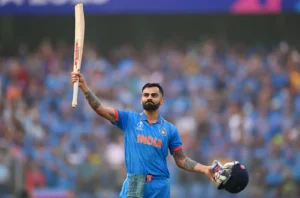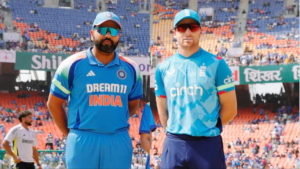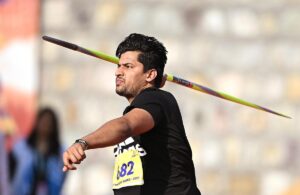India’s medalists from the Paris Olympics, including prominent shooters, have expressed dissatisfaction with their medals
 Several athletes who won medals at the 2024 Paris Olympics, including some of India’s most prominent shooters, have raised concerns about the deterioration and discoloration of their Olympic medals. Reports suggest that medals of athletes from around the world have shown signs of rust and fading, prompting requests for replacements.
Several athletes who won medals at the 2024 Paris Olympics, including some of India’s most prominent shooters, have raised concerns about the deterioration and discoloration of their Olympic medals. Reports suggest that medals of athletes from around the world have shown signs of rust and fading, prompting requests for replacements.
Indian shooters Swapnil Kusale and Sarabjot Singh, both of whom earned bronze medals at the Paris Games, were among the first to notice the issue. Kusale, who won a bronze in the 50m 3-position event, expressed disappointment as the color of his medal began to wear off within just seven days of receiving it. “When I reached India, friends, coaches, and fellow shooters also pointed it out. The removal of the coating was visible, and everyone noticed it,” Kusale said. Similarly, Sarabjot Singh, who won a mixed team medal alongside Manu Bhaker, reported a similar issue with his medal, which started discoloring shortly after the ceremony. He emphasized that Olympic medals are symbols of achievement and inspiration for athletes, and such deterioration should not occur.
Manu Bhaker, another Indian shooter who bagged two bronze medals in the 10m air pistol individual and mixed events, also reported the same issue with his medals, noting that their color had faded. This has caused concern as it contrasts sharply with Olympic medals from previous decades, which have largely maintained their condition.
Hardik Singh, a hockey player whose granduncle, Gurmail Singh, won a gold medal in the 1980 Moscow Olympics, highlighted the difference in quality. He pointed out that while Gurmail Singh’s Olympic gold had remained untarnished over the years, Hardik’s bronze medal from the Paris Olympics had developed discoloration. This inconsistency in the quality of medals has led many to question the materials and production processes used in the 2024 Games.
The issue of discolored medals extends beyond Indian athletes. American skateboarder Nyjah Huston had raised alarms earlier, posting a video in which he showed his deteriorating bronze medal. Recently, French swimmers Yohann Ndoye-Brouard and Clément Secchi also shared images of their medals, which appeared to be covered in patterns resembling “crocodile skin,” leading to further concerns over the quality of the medals.
In response to these complaints, the International Olympic Committee (IOC) and the French mint, Monnaie de Paris, which produced the medals, have acknowledged the issue and are working to address it. The IOC confirmed that Paris organizers have been in touch with national Olympic committees and that the replacement process would begin in early 2025. The French mint stated that it had taken the matter seriously, optimizing its varnishing process and assuring that damaged medals would be replaced at the athletes’ request.
PT Usha, president of the Indian Olympic Association (IOA), expressed the organization’s willingness to assist any athlete who wishes to replace a deteriorated medal. “An Olympic medal is a lifetime achievement and a cherished memory. If any athlete feels that their medal has deteriorated due to poor quality, we will request the IOC for a replacement,” Usha said. The IOA has pledged to support athletes who are facing similar issues, and Kusale, for one, remains hopeful that the medals will be replaced. He believes that Olympic medals should preserve their original condition to inspire future generations, stressing that the legacy of these medals should not be tarnished.
The Paris Olympic medals, designed by the Parisian jewelry house Chaumet, contained a polished chunk of iron from the Eiffel Tower. Despite their distinctive design, athletes are now urging for improvements in the production process to ensure that future medals do not suffer the same fate. As the replacement process gets underway, athletes hope that their cherished achievements will be restored to their original form.








